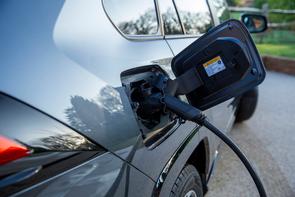Spotlight on: hybrids

Hybrid cars have been with us for the best part of 30 years, but the terminology surrounding the various types can be confusing, with different car makers having their own take on the technology. In essence, though, they all share a basic principle. As well as using a conventional petrol or diesel engine to provide power, they also have an electric motor that’s there to take some of the strain and reduce fuel burn.
Not only does that mean you’ll spend less at the fuel pumps, but it also allows the car to emit less carbon dioxide on the Worldwide Light Vehicle Test Procedure (WLTP) that all new cars must go through to determine their official economy and emissions figures. That, in turn, means you pay less in VRT and other forms of tax, including the Benefit-in-Kind tax applied to company cars.
But if you’re still deciding what kind of hybrid might suit you, here’s our list of the three key types, plus a few other options.
Mild hybrid (MHEV – Mild Hybrid Electric Vehicle)
One of the most common forms of hybrid is the so-called ‘mild’ hybrid, which is used in numerous new cars without customers even noticing. That’s because the electric motor never drives the wheels. Instead, it’s used to help the engine, taking some of the strain when it’s at its least efficient, such as when starting up or pulling away. Many mild hybrids also use the electrical system to power ancillary devices, such as climate control, while the car is coasting to a halt, allowing the on-board computer to shut down the engine.
Most of the time, though, the driver is unlikely to be able to tell whether they’re driving a mild hybrid or not, although some manufacturers market the technology in a slightly ambiguous way. For example, the Fiat 500 Hybrid is a mild hybrid, as is the Suzuki Swift Hybrid. Confusingly, Suzuki also sells some full hybrid and plug-in hybrid models, about which more in a moment.
‘Full’ or ‘self-charging’ hybrid (HEV – Hybrid Electric Vehicle)
The ‘original’ hybrid system, now known as a ‘full’ hybrid system, was popularised by Toyota, which still uses an evolution of its original system to power everything from the Yaris hatchback to the Highlander 4x4. This technology uses the electric motor to drive the wheels at low speeds or when the engine is under light load. That means the car can shut down the engine when crawling in traffic or in a car park, saving fuel. However, because full hybrids tend to have a small battery, they can’t go far before the petrol engine needs to kick in.
When it does, the system will use some of that power to top up the little battery, as there’s no plug with which to recharge the system. That’s where the controversial name ‘self-charging hybrid’ came from because the car charges the battery itself, though in effect it uses the fuel in the tank to do that for the most part. Critics say the term is misleading because the car uses engine power (and fuel) to provide electrical power, so the system isn’t as efficient as the name suggests.
That said, the full hybrid system will also garner some power from regenerative braking – converting the kinetic energy of the car into electrical energy when the car is coasting to a stop. This usually means you feel a bit of ‘drag’ in the system when coasting, and hence you tend to use the brakes less. And that’s good news, because conventional brakes turn kinetic energy into heat, which dissipates into the environment, whereas regenerative braking turns kinetic energy into electrical energy, which helps drive the wheels when you set off again.
Plug-in hybrid (PHEV – Plug-in Hybrid Electric Vehicle)
Like full hybrids, plug-in hybrids (or PHEVs) use an electric motor to drive the wheels, but they have larger batteries and often more powerful motors, which means they can cover longer distances at higher speeds without needing the combustion engine’s help. Some plug-in hybrids can cover up to 100km on electrical power alone and reach speeds in excess of 100km/h without using any fuel.
But that isn’t the main difference between a full hybrid and a plug-in hybrid. No, as the name suggests, plug-in hybrids can be plugged into an electricity supply, just like a fully electric car. The idea is you use electrical power for short journeys or driving around town, then use the combustion engine for longer trips. You can choose how often you charge or fill up with fuel.
Critics say plug-in hybrids are inefficient and rarely charged by their owners, but we say that used properly, a plug-in hybrid can be a great halfway house between a combustion- and electric-powered car.
Variations on a theme
Although these are the three main types of hybrid car out there, some manufacturers have their own twists on the technology. Nissan’s e-Power technology, for example, uses an electric motor to drive the wheels and a petrol engine to charge the relatively small battery. You can’t plug in to charge, so it isn’t a plug-in hybrid, and the engine doesn’t drive the wheels, so it isn’t quite a full hybrid. Essentially, it’s an electric car with a petrol generator, a bit like the old diesel-electric trains.
Honda’s e:HEV system works a bit like the e-Power tech at low speeds but uses the petrol engine to drive the wheels at motorway speeds when it’s at its most efficient. Or there’s Mazda’s MX-30 R-EV, which works like a plug-in hybrid, in that the battery can be charged, but the tiny rotary engine never drives the wheels. Instead, it just charges the battery.
Carzone - 04-Apr-2024


